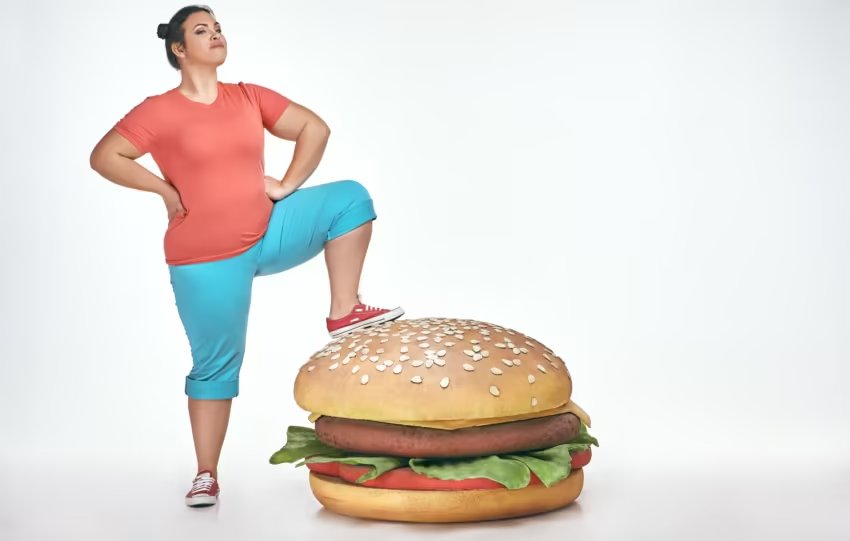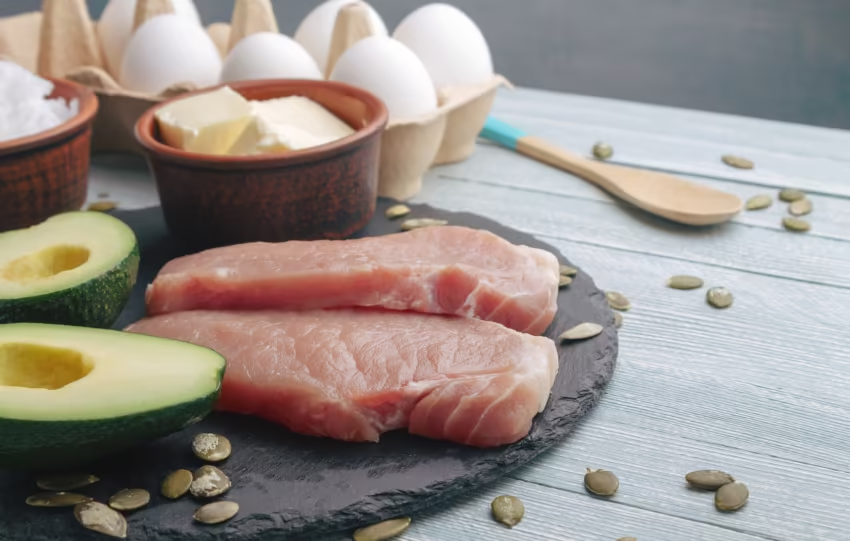The ketogenic (keto) diet, defined by its high-fat, moderate-protein, and very low-carbohydrate composition, has become a popular strategy for weight loss, metabolic health improvement, and enhanced physical performance. By inducing ketosis—a metabolic state where the body burns fat for fuel instead of glucose—the keto diet synergizes with exercise to maximize fat burning and optimize body composition. For individuals aiming to leverage this synergy, selecting the right workouts is critical to enhance fat oxidation, preserve lean muscle mass, and support overall health. This article provides a comprehensive, science-backed guide to combining the keto diet with exercise, detailing the best workouts for fat burning, their physiological mechanisms, practical tips, and sample routines tailored for keto dieters. Written for the general public, this guide balances technical accuracy with accessibility, ensuring readers can effectively integrate diet and exercise for optimal results.
Keywords: keto diet and exercise, best workouts for keto, keto fat burning, ketogenic diet exercise plan, low-carb diet workouts, keto weight loss exercise, strength training on keto, cardio for keto, keto fitness tips, keto exercise benefits
Understanding the Keto Diet and Its Impact on Exercise
The ketogenic diet typically comprises 55–60% fat, 30–35% protein, and 5–10% carbohydrates, with daily carb intake restricted to 20–50 grams. This macronutrient distribution depletes glycogen stores, prompting the liver to produce ketones (beta-hydroxybutyrate, acetoacetate, and acetone) from fatty acids, which serve as an alternative energy source. Ketosis, typically achieved within 2–4 days of carb restriction, shifts the body’s metabolism toward fat oxidation, making it an ideal state for fat-burning workouts.
Exercise on keto enhances fat loss by further depleting glycogen and increasing reliance on stored fat. However, the low-carb nature of keto can affect exercise performance, particularly during high-intensity activities that rely on glycolysis. A 2018 study in The Journal of Sports Medicine and Physical Fitness found that keto-adapted athletes showed increased fat oxidation during moderate-intensity exercise but reduced performance in high-intensity efforts due to limited glycogen. Thus, workout selection and timing are crucial for keto dieters to maximize fat burning while minimizing fatigue.
Physiological Benefits of Combining Keto and Exercise
1. Enhanced Fat Oxidation
In ketosis, the body’s upregulated fat metabolism synergizes with exercise to increase lipid oxidation. A 2020 study in Nutrients demonstrated that keto-adapted individuals burned 59% more fat during moderate aerobic exercise compared to those on a high-carb diet. This makes keto particularly effective for endurance and moderate-intensity workouts.
2. Improved Insulin Sensitivity
Exercise enhances insulin sensitivity, complementing keto’s ability to lower insulin levels. A 2022 meta-analysis in BMC Endocrine Disorders found that ketogenic diets combined with exercise significantly reduced hemoglobin A1c (HbA1c) and fasting glucose in individuals with type 2 diabetes, supporting metabolic health.
3. Preservation of Lean Mass
Strength training on keto helps preserve lean muscle mass, which can decline due to reduced insulin signaling. A 2021 study in Nutrients noted that resistance training mitigated muscle loss in women on a ketogenic diet, emphasizing the importance of incorporating strength-based workouts.
4. Cognitive and Energy Benefits
Ketones provide a stable energy source for the brain, potentially improving focus during workouts. Anecdotal reports and preliminary studies suggest reduced perceived exertion in keto-adapted athletes during low-to-moderate-intensity exercise, though data are limited.
5. Cardiovascular Health
Moderate exercise combined with keto’s focus on healthy fats (e.g., monounsaturated and polyunsaturated fats) can improve lipid profiles, increasing HDL cholesterol and lowering triglycerides. However, high saturated fat intake may elevate LDL cholesterol, necessitating careful food choices.
Risks and Considerations for Exercising on Keto
1. Keto Flu and Initial Fatigue
During the adaptation phase (1–4 weeks), keto flu symptoms (fatigue, nausea, weakness) can impair exercise performance. Electrolyte imbalances (sodium, potassium, magnesium) exacerbate this, requiring supplementation and adequate hydration.
2. Reduced High-Intensity Performance
High-intensity interval training (HIIT) and sprinting rely on glycogen, which is limited on keto. A 2019 study in Medicine & Science in Sports & Exercise found that keto-adapted athletes had reduced anaerobic capacity, suggesting a need for modified workout intensity.
3. Risk of Muscle Loss
Without sufficient protein (0.6–1.0g per pound of lean body mass) and resistance training, keto can lead to muscle catabolism. Women, in particular, are at risk due to lower baseline muscle mass.
4. Electrolyte Imbalances
Exercise increases electrolyte loss through sweat, compounding keto’s diuretic effect. A 2020 review in Sports Medicine highlighted the importance of sodium (3–5g/day), potassium (3–4g/day), and magnesium (300–400mg/day) supplementation for keto athletes.
Best Workouts for Fat Burning on Keto
The following workouts are optimized for keto dieters, emphasizing fat oxidation, muscle preservation, and metabolic health. Each is supported by scientific evidence and tailored to keto’s unique metabolic demands.
1. Strength Training (Resistance Exercise)
- Why It Works: Strength training preserves lean muscle mass, boosts metabolism, and enhances fat burning by increasing resting energy expenditure. A 2021 study in Nutrients found that resistance training on keto increased fat loss while maintaining muscle in women.
- Best Exercises: Compound movements like squats, deadlifts, bench presses, and pull-ups. Use moderate weights (60–75% of one-rep max) for 8–12 reps, 3–4 sets.
- Frequency: 2–3 sessions per week, targeting all major muscle groups.
- Keto Tip: Consume 20–30g protein (e.g., a whey protein shake) post-workout to support muscle recovery without disrupting ketosis.
2. Moderate-Intensity Steady-State Cardio (MSSC)
- Why It Works: MSSC (e.g., brisk walking, cycling, swimming) operates in the fat-burning zone (60–70% of max heart rate), aligning with keto’s fat-oxidation focus. A 2020 study in Nutrients confirmed higher fat burning during MSSC in keto-adapted individuals.
- Best Exercises: Walking (3–4 mph), cycling (10–12 mph), or swimming at a steady pace.
- Frequency: 150–300 minutes weekly, split into 30–60-minute sessions.
- Keto Tip: Perform MSSC in a fasted state (e.g., morning) to maximize fat utilization, as glycogen stores are lower.
3. Low-Intensity Steady-State Cardio (LISS)
- Why It Works: LISS (e.g., leisurely walking, yoga) enhances fat burning without taxing glycogen stores, ideal for keto beginners or during adaptation. It also reduces cortisol, supporting ketosis.
- Best Exercises: Walking (2–3 mph), gentle yoga, or light stretching.
- Frequency: 3–5 sessions weekly, 20–40 minutes each.
- Keto Tip: Pair LISS with mindfulness practices to reduce stress, which can elevate blood sugar.
4. Modified High-Intensity Interval Training (HIIT)
- Why It Works: While traditional HIIT relies on glycogen, modified HIIT with shorter intervals (e.g., 20 seconds work, 40 seconds rest) minimizes glucose demand while boosting fat metabolism. A 2018 study in Journal of Strength and Conditioning Research showed HIIT improved fat loss in keto dieters when adapted.
- Best Exercises: Bodyweight circuits (e.g., burpees, mountain climbers) or kettlebell swings.
- Frequency: 1–2 sessions weekly, 15–20 minutes each.
- Keto Tip: Perform HIIT after keto adaptation (4–6 weeks) and ensure adequate electrolyte intake to prevent cramps.
5. Flexibility and Mobility Work
- Why It Works: Stretching and mobility exercises improve recovery, reduce injury risk, and support overall fitness. They are low-intensity, making them keto-friendly.
- Best Exercises: Dynamic stretches (e.g., leg swings), foam rolling, or Pilates.
- Frequency: 2–3 sessions weekly, 10–15 minutes each.
- Keto Tip: Use mobility work as active recovery on rest days to maintain consistency.
Sample 7-Day Keto Exercise Plan
This plan integrates strength, cardio, and mobility workouts to optimize fat burning while supporting keto adaptation. It assumes a moderately active individual (e.g., 30–50 years old, 150–180 lbs) in ketosis.
Day 1: Strength Training (Full Body)
- Warm-Up: 5 min dynamic stretches (arm circles, leg swings)
- Workout: Squats (3 sets x 10 reps), Push-Ups (3 sets x 12 reps), Bent-Over Rows (3 sets x 10 reps), Plank (3 x 30 sec)
- Cool-Down: 5 min static stretching
- Duration: 45 min
- Keto Tip: Consume 20g protein shake post-workout.
Day 2: Moderate-Intensity Cardio
- Warm-Up: 5 min light walking
- Workout: Brisk walking (3.5 mph) or cycling (12 mph) at 65% max heart rate
- Cool-Down: 5 min slow walking
- Duration: 40 min
- Keto Tip: Perform fasted for maximum fat burning.
Day 3: Low-Intensity Cardio + Mobility
- Warm-Up: 5 min gentle yoga flow
- Workout: Leisurely walk (2.5 mph, 20 min), foam rolling (10 min)
- Cool-Down: 5 min static stretching
- Duration: 35 min
- Keto Tip: Hydrate with electrolyte-enhanced water.
Day 4: Strength Training (Lower Body)
- Warm-Up: 5 min dynamic stretches
- Workout: Deadlifts (3 sets x 10 reps), Lunges (3 sets x 12 reps per leg), Glute Bridges (3 sets x 15 reps)
- Cool-Down: 5 min stretching
- Duration: 40 min
- Keto Tip: Eat a high-fat snack (e.g., 20g almonds) pre-workout.
Day 5: Modified HIIT
- Warm-Up: 5 min light jogging
- Workout: 20 sec burpees, 40 sec rest (8 rounds); 20 sec kettlebell swings, 40 sec rest (8 rounds)
- Cool-Down: 5 min stretching
- Duration: 20 min
- Keto Tip: Ensure 4–6 weeks of keto adaptation before HIIT.
Day 6: Rest or Active Recovery
- Workout: Gentle yoga (20 min) or leisurely walk (15 min)
- Duration: 15–20 min
- Keto Tip: Focus on stress reduction to support ketosis.
Day 7: Strength Training (Upper Body)
- Warm-Up: 5 min dynamic stretches
- Workout: Bench Press (3 sets x 10 reps), Pull-Ups (3 sets x 8 reps, assisted if needed), Shoulder Press (3 sets x 12 reps)
- Cool-Down: 5 min stretching
- Duration: 40 min
- Keto Tip: Supplement with 1–2g omega-3s post
This plan balances intensity to prevent glycogen depletion while promoting fat loss. Adjust weights and durations based on fitness level.
Practical Tips for Exercising on Keto
- Time Workouts Strategically: Schedule moderate-intensity workouts in a fasted state to maximize fat burning. Perform strength training after a high-fat meal to fuel performance.
- Hydrate and Replenish Electrolytes: Drink 2–3 liters of water daily and supplement with sodium, potassium, and magnesium to prevent cramps and fatigue.
- Ease into Exercise: During the first 2–4 weeks of keto, focus on low-to-moderate-intensity workouts to allow adaptation.
- Monitor Recovery: Adequate sleep (7–9 hours) and stress management (e.g., meditation) reduce cortisol, supporting ketosis and recovery.
- Track Progress: Use body composition scales or DEXA scans to monitor fat loss versus muscle loss, ensuring workouts align with goals.
- Incorporate Variety: Rotate strength, cardio, and mobility to prevent plateaus and maintain motivation.
- Adjust Macros for Activity: Increase fat intake (e.g., add 1 tbsp MCT oil) on high-intensity workout days to support energy needs.
- Listen to Your Body: Scale back intensity if experiencing excessive fatigue or poor recovery, as these may indicate overtraining or electrolyte imbalance.
Sample Keto Recipes for Pre/Post-Workout
Pre-Workout: Keto Fat Bomb
- Ingredients: 2 tbsp coconut oil, 1 tbsp almond butter, 1 tbsp cocoa powder, 1 tsp erythritol
- Instructions: Mix, pour into molds, freeze for 1 hour. Makes 4 bombs.
- Macros (per bomb): 100 kcal, 10g fat, 1g protein, 0.5g net carbs
Post-Workout: Keto Protein Shake
- Ingredients: 1 scoop whey protein isolate (20g protein), 1 cup unsweetened almond milk, 1 tbsp MCT oil, ½ tsp stevia
- Instructions: Blend ingredients with ice until smooth.
- Macros (per serving): 250 kcal, 15g fat, 20g protein, 2g net carbs
FAQs
Q1: Can I exercise during the keto adaptation phase?
A1: Yes, but stick to low-to-moderate-intensity workouts (e.g., walking, yoga) for the first 2–4 weeks to manage keto flu and fatigue.
Q2: What’s the best workout for fat burning on keto?
A2: Moderate-intensity steady-state cardio and strength training maximize fat oxidation while preserving muscle mass.
Q3: Will exercise kick me out of ketosis?
A3: Moderate exercise supports ketosis by depleting glycogen. High-intensity exercise may temporarily raise glucose but won’t disrupt ketosis if carbs remain low.
Q4: How much protein should I eat after workouts on keto?
A4: Consume 20–30g protein (e.g., eggs, whey protein) within 30 minutes post-workout to support muscle recovery without affecting ketosis.
Q5: Can I do HIIT on keto?
A5: Modified HIIT with shorter intervals is effective after keto adaptation (4–6 weeks), but traditional HIIT may be challenging due to low glycogen.
Q6: How do I prevent cramps during workouts on keto?
A6: Supplement with sodium (3–5g/day), potassium (3–4g/day), and magnesium (300–400mg/day), and stay hydrated.
Q7: Should I eat before or after workouts on keto?
A7: Fasted cardio maximizes fat burning; consume a high-fat snack pre-strength training and protein post-workout for recovery.
Q8: Can keto affect my exercise performance?
A8: Initially, performance may dip due to low glycogen, but after adaptation, fat oxidation improves, especially for endurance activities.
Q9: How often should I exercise on keto?
A9: Aim for 3–5 workouts weekly, combining strength (2–3x), cardio (2–3x), and mobility (1–2x), with rest days for recovery.
Q10: Does exercise speed up ketosis?
A10: Yes, exercise depletes glycogen faster, accelerating ketosis, especially when paired with a strict low-carb diet.
Conclusion
Combining the ketogenic diet with exercise is a powerful strategy for fat burning, improved metabolic health, and muscle preservation. By focusing on strength training, moderate-intensity cardio, and low-intensity activities, keto dieters can maximize fat oxidation while minimizing the challenges of low glycogen stores. The provided 7-day exercise and meal plans offer practical tools to integrate diet and fitness effectively, supported by scientific evidence on keto’s metabolic benefits. Key considerations include managing keto flu, ensuring electrolyte balance, and tailoring workouts to individual fitness levels. With strategic planning, hydration, and consistent monitoring, the keto diet and exercise can synergize to achieve sustainable fat loss and long-term health.
Bibliography
- Batch, J. T., et al. (2023). Ketogenic Diet. StatPearls. Available at: https://www.ncbi.nlm.nih.gov/books/NBK499830/
- Burén, J., et al. (2021). A Ketogenic Low-Carbohydrate High-Fat Diet Increases LDL Cholesterol in Healthy, Young, Normal-Weight Women: A Randomized Controlled Feeding Trial. Nutrients, 13(3), 814. doi: 10.3390/nu13030814. Available at: https://www.ncbi.nlm.nih.gov/pmc/articles/PMC8001988/
- Li, S., et al. (2022). The effect of periodic ketogenic diet on newly diagnosed overweight or obese patients with type 2 diabetes. BMC Endocrine Disorders, 22(1), 34. doi: 10.1186/s12902-022-00947-2. Available at: https://www.ncbi.nlm.nih.gov/pmc/articles/PMC8812236/
- Volek, J. S., et al. (2018). Metabolic characteristics of keto-adapted ultra-endurance runners. The Journal of Sports Medicine and Physical Fitness, 58(3), 298–307. doi: 10.23736/S0022-4707.17.07319-5.
- McSwiney, F. T., et al. (2019). Impact of ketogenic diet on athletes: Current insights. Medicine & Science in Sports & Exercise, 51(6), 1177–1185. doi: 10.1249/MSS.0000000000001910.
- Paoli, A., et al. (2020). Ketogenic diet and skeletal muscle hypertrophy: A frenemy relationship? Sports Medicine, 50(10), 1713–1725. doi: 10.1007/s40279-020-01320-7.
- Harvard Health Publishing. (2024). Should you try the keto diet? Harvard Health. Available at: https://www.health.harvard.edu/staying-healthy/should-you-try-the-keto-diet
- Kubala, J. (2023). A Keto Diet for Beginners: The Ultimate Guide. Healthline. Available at: https://www.healthline.com/nutrition/ketogenic-diet-101
- Spritzler, F. (2023). Exercise on a Keto Diet: What You Need to Know. Diet Doctor. Available at: https://www.dietdoctor.com/low-carb/keto/exercise
- Masood, W., & Uppaluri, K. R. (2023). Ketogenic Diet and Nutritional Ketosis. StatPearls. Available at: https://www.ncbi.nlm.nih.gov/books/NBK559029/









